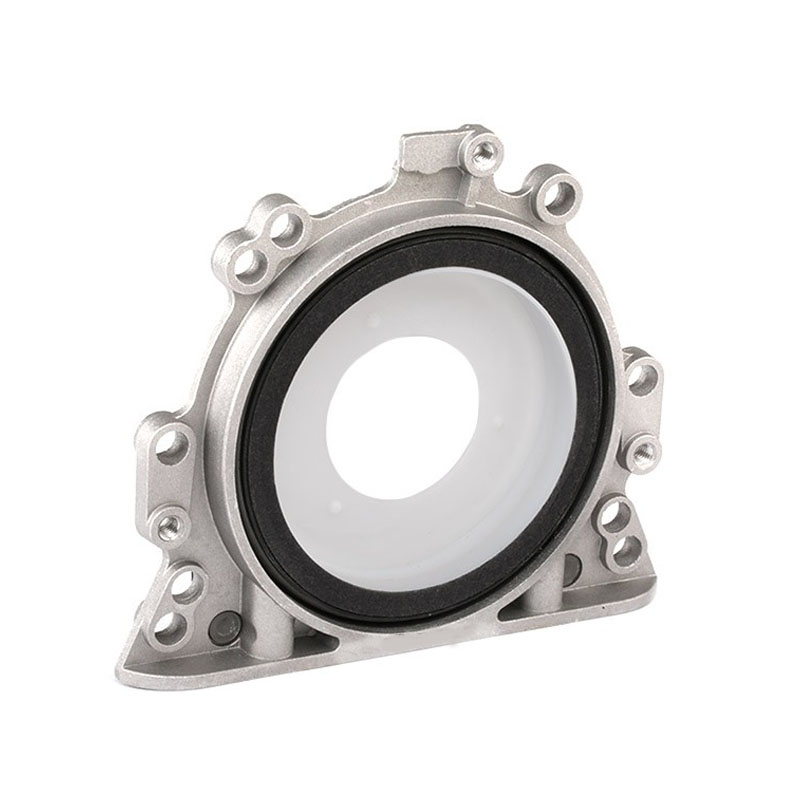Understanding O-Ring Hydraulic Seals for Enhanced Performance and Reliability in Fluid Systems
Understanding O-Ring Hydraulic Seals
O-ring hydraulic seals are critical components in various hydraulic systems, playing a vital role in ensuring the efficiency and reliability of machinery. As a type of gasket, O-rings are circular seals that prevent the leakage of fluids or gases in various applications. Their simple design yet efficient functionality makes them a prevalent choice in industries ranging from automotive to aerospace.
What is an O-Ring?
An O-ring is a toroidal shape, typically made from elastomeric materials such as rubber or polymer, designed to create a seal between two or more parts of a machine. When compressed between these surfaces, O-rings can effectively prevent the passage of fluids or gases under pressure. This is achieved by creating a barrier that adapts to the shape of the mating surfaces, minimizing the risk of leakage.
Importance in Hydraulic Systems
In hydraulic applications, where fluids are under significant pressure, the need for reliable sealing solutions is paramount. O-rings provide a low-cost and effective means to ensure that hydraulic systems operate efficiently. Their design allows for a uniform sealing surface, which is crucial to maintaining the integrity of hydraulic circuits.
Hydraulic systems rely on the precise movement of fluids to transmit energy, and any leakage can lead to diminished performance, increased maintenance costs, and potential system failures. O-ring hydraulic seals help maintain pressure and prevent fluid loss, thus safeguarding the equipment and enhancing operational longevity.
Types of O-Ring Materials
The effectiveness of O-rings is largely dependent on the material used to manufacture them. Various materials exhibit different chemical and physical properties, making them suitable for specific applications. Common materials include
1. Nitrile Rubber (NBR) Known for its excellent resistance to petroleum-based fluids and a wide temperature range, NBR is the most commonly used O-ring material in hydraulic applications.
2. Fluorocarbon (FKM) This material offers outstanding chemical resistance, particularly against fuels and solvents. It can operate at higher temperatures, making it ideal for demanding environments.
o ring hydraulic seals

4. Polyurethane Known for its excellent abrasion resistance and toughness, polyurethane O-rings are suitable for applications where wear and tear are a concern.
O-Ring Design Considerations
When selecting O-rings for hydraulic systems, several factors must be taken into account
- Size The inner diameter and cross-sectional thickness of the O-ring must fit precisely with the components it seals against.
- Compression Proper compression is crucial for effective sealing. Too much compression can lead to deformation and failure, while too little may not provide an adequate seal.
- Operating Environment Considering the temperature, pressure, and chemical exposure is essential to select the right material and design.
- Dynamic vs. Static Applications O-rings in dynamic applications (where there is movement) require specific considerations, such as friction and wear resistance.
Conclusion
O-ring hydraulic seals play an indispensable role in the operational efficacy of hydraulic systems. Their versatility, reliability, and cost-effectiveness make them an ideal choice for a wide range of applications. By understanding the types of materials available and the design considerations necessary for their implementation, engineers can ensure optimal performance and longevity of hydraulic systems. Proper maintenance and timely replacement of O-rings can prevent leaks and extend the life of hydraulic machinery, leading to improved safety and efficiency in industrial operations.
-
Understanding the Front Main Engine Seal: Importance, Symptoms & Replacement
News May.06,2025
-
Understanding Automotive Shaft Seals: Importance for Engine Protection
News May.06,2025
-
The Importance of Heavy Duty Seals: Types, Benefits, And Applications
News May.06,2025
-
The Essential Role of Heavy Duty Seals for Durability and Protection
News May.06,2025
-
The Essential Guide to O-Rings: Types, Applications & Custom Solutions
News May.06,2025
-
A Complete Guide to Crank Pulley Seals: Importance, Costs, And Maintenance
News May.06,2025
-
Understanding Cassette Seals: A Durable Solution for Oil and Dirt Protection
News Apr.30,2025
Products categories















